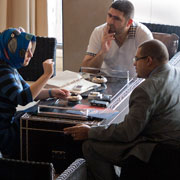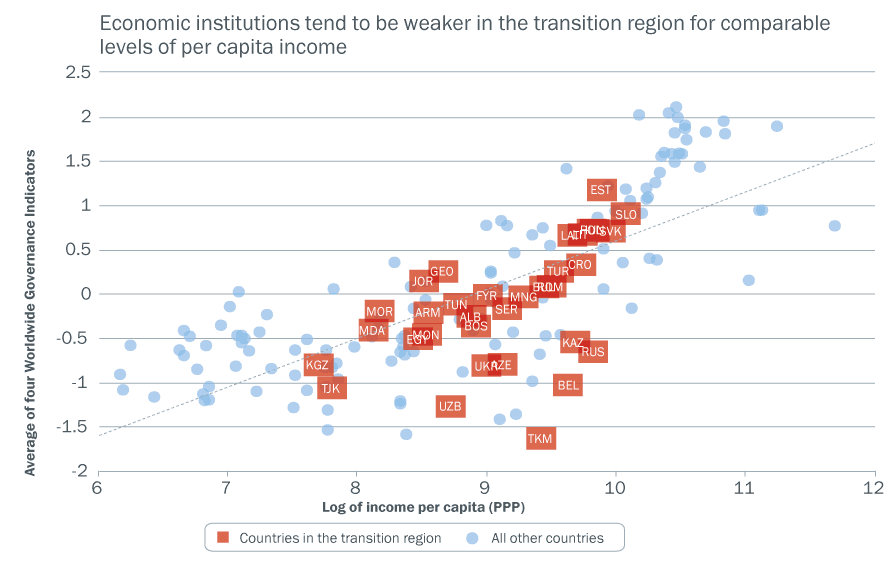Economic institutions
Forces shaping economic institutions - Geography and history
- Details
- Economic institutions
To what extent might the quality of institutions be predetermined by geography or history? Tables 3.1 and 3.2 include a number of geographical variables that have been discussed in the literature on economic growth. Countries that are further away from the equator may have stronger economic institutions (for given levels of democracy) because temperate climates are more conducive to economic specialisation, the development of trade and industrial growth. Characteristics of the terrain – captured by a measure of the ruggedness of the territory – and access to the sea may also matter.1 Being landlocked or having more difficult terrain increases the cost of trade and investment – but may, at the same time, encourage the development of institutions to compensate for this.
For the most part, these variables do not appear to be statistically significant in the regressions. Neither is the average distance to other countries weighted by their GDPs (a measure of a country’s remoteness).
A country’s history is a more important factor. Several recent studies indicate that economic institutions exhibit a strong degree of path dependence that may stretch back centuries2 – in other words, colonial powers and empires can have a long-lasting impact on societies that come under their rule. Box 3.1 shows that there are large differences in terms of the average level of EBRD transition indicators between countries that used to be under the control of the Russian, Habsburg, Prussian and Ottoman empires. In particular, imperial history appears to influence the impact that natural resources have on transition trajectories. These effects diminish over time, but only slowly.
One significant historical factor is the length of time that a country has been an independent state. In Tables 3.1 and 3.2 this is captured by a “state antiquity index”.3 This appears to have an impact on the WGI average, and even more so on the transition indicators (see Table 3.2). All else being equal, the transition performance of “old” countries, such as Poland and Russia, appears to have been better than that of countries with shorter histories as independent states, which includes most Central Asian countries, the Baltic states and the Slovak Republic.
The influence of history is also visible in the fact that, more than 20 years after the start of the transition process, countries in the transition region still appear to have weaker economic institutions, on average, than other nations. Chart 3.3 shows that the quality of economic institutions in countries in the transition region tends to be below the levels observed in other countries with comparable levels of per capita income. However, as Table 3.1 shows, this effect is not generally statistically significant, suggesting that the influence of the communist period on today’s institutions in these countries mostly occurs through – rather than in addition to – its effect on other variables that are independently accounted for in the regressions. Comparing the outliers on both sides of the trend line in Chart 3.3 suggests that it is mainly some eastern European and Central Asian countries with weaker political institutions that are driving this effect.














